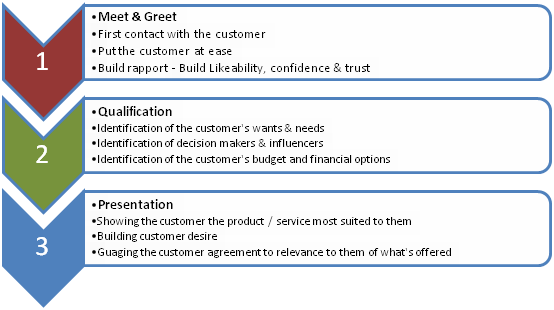Sep 29, 2014 | Sales, Self

Do you really know how to motivate yourself? Do you struggle with making deadlines? Do you feel burnt out and tired all the time? Do you frequently put tasks off? These are some signs of being unmotivated. Below are four key ways to help you motivate yourself. When you’re motivated you are more on top of your priorities and feel good about yourself and your work. Try these motivation tips to better yourself and your work.
1) Make time psychology work for you. If you have ever taken a time management course before, you have learned how to pack more into less. But have you ever noticed how difficult it is to leave a project or job incomplete? You can play on this psychology of completion by writing out a “things to achieve” list before you go home at the end of the workday. Chances are if you don’t have a good system for picking up exactly where you left off, it’s like starting over. Tonight, instead of just tidying up before you leave the office, lay out the pieces where you need to pick up to get off and running first thing in the morning.
2) Give yourself daily and hourly goals. Very few of us have the ability to stay disciplined all the time. Yet studies have shown that a big difference between those who succeed and those who fail is constant and concentrated activity. Big hitters report such behaviors as not taking lunch until they make a pre-set number of phone calls. They don’t allow themselves to play golf until they sell a certain number of units. Sure they make sacrifices. But in the meantime they also make sales. Most who practice this method of self denial say that when they do earn a lunch or a golf game, the taste is very sweet when linked to successfully accomplished activity.
3) Make selling a game. When you take your work too seriously, it becomes drudgery instead of enjoyment. Most top producers mention that their income takes a back seat to how much fun they have on the job. Interestingly, many poor producers look at their paycheck as being the biggest motivator. The problem is that your sales production will fluctuate. Try “playing” more often with your best customers. Send out birthday cards to prospects or customers you care about. Turn sales calls into a game by counting how many times you have to get a “no” before you get to a “yes”. Then make a game out of getting to that “no” number, knowing that a “yes” is just on the horizon.
4) Burn out is a key factor in maintaining motivation. A great way to avoid the symptoms of burn out is to link rewards to activity instead of success. This idea is a bit contrary to most opinion that you must set goals (and I agree!). But to change things up, and avoid killing motivation because you didn’t hit a goal, try giving yourself a reward for activity. A great way to create motivation is to give yourself a reinforcement gift that comes as a result of superior effort. If you maintain it consistently, effort always results in success!
For more great ideas on motivation and other topics, join the ActionClub program.
Sep 24, 2014 | Sales

Does your business use a defined sales process? If not, you’re not alone, but you’re also not getting everything you could from your sales team or your investment in marketing. If we want customers to buy from us, it’s only logical that we understand the best way to help them do it. Sales is nothing more than professionally helping people to buy. In order to help people “professionally” its vital to use a consistent process with the key steps clearly detailed for the sales team to apply to ensure greatest likelihood that more customers will buy.
An outline of the main steps of a defined sales process is as follows:


You can use this basic framework as the basis for any sales team to generate more sales. You’ll want to modify it to suit your own business, and add the important details that determine real success. By working through each of these steps the sales team can adapt the best practices for them, whether in a retail shop, services or product business, tailoring each process to meet their customers’ needs. For instance, in a clothing shop the “demonstration” step would be encouraging more customers to try on the clothes whereas, for a professional services firm the demonstration may take the form of known third-party testimonials, case studies or even site visits.
The key is to have a defined series of steps with detailed processes within each step, leading the customer through each step so that their needs are clearly defined while building on their desire to buy. A good sales process will not only lead to more sales, but more profit and more satisfied customers. For more help on developing your own sales process, get in touch with me today!
Aug 11, 2014 | Sales

Profitable sales are the most important element in a business. You can have the greatest product in the world, but if no one buys it then what difference does it make (Beta Max anyone?).
Many people have challenges going into sales mode—they think that successful sales people are born that way. Not true.
There are three things that anyone can do to improve their ability to effectively sell their products and services. The key is that they have to want to improve. Without that, there’s little hope for success.
So here are the three things that you can work on to improve your sales performance:
1.) Knowledge — what are you doing to “study” sales? To get better at anything, you have to put in time. So a little less Dancing with the Stars and a little more investment in building your sales knowledge. Authors to consider include Gitomer, Cialdini, Hopkins, Ziglar and Sugars.
2.) Mindset — we conduct a study all over the world and come out with the same universal results. When we ask people what comes to mind when they think of the term “sales person” (and when they are honest), the terms are 95%+ negative. We need to retool the mindset around sales. Yes there are bad salespeople, but you don’t have to be one of them. Sales is nothing more than professionally helping people to buy. What do you do to get in a positive frame of mind before a sales call? Do you run through a list of “I AM” positive affirmation statements, listen to a certain song, read a testimonial, use a confidence anchor? Whatever it is, make sure that it pumps you up and gets you in sales mode.
3. Sales Process — Have a written or flow charted sales process. See below as this is a biggie for success.
ACTION TIP —SALES PROCESS
How do you sell your products or services? Every company should have a sales process, including tracking results, that they follow. Benefits of a process are:
- You’ll actually know your numbers. In your sales process, there is a step where many of your candidates fall out. Is that early or late in the process? What can you change at that point in the process to generate better results?
- You’ll actually be more flexible. By having a process, you can focus on the perspective client and not try to figure out what to say next. It will put the prospect at ease. For the most part, they’ve not bought your service before. A process will help them see and understand where the conversation is going.
Pick out one of these 3 keys to work on in the next week, and you will see improvements.
May 19, 2014 | Sales

The perception of most business owners I talk to is that people are very price focused shoppers, and only care about price. But the only reason customers ask for the price first, is because that is what we, as business owners, have trained them to do, and we have not done a good job of finding out what they really need.
More often than not, people go into a store not really knowing what model, style, color or features they are looking for and since they are uncertain what else to ask, they ask for the price. At this point should the salesperson come back with the direct response, “That is $49.95” or should they ask the customer some questions about how they are looking to use the product/service? Lets look at a simple example of a coffee maker.
Now in many people’s eyes a coffee maker is a coffee maker, but it can have many different features and offer many different benefits.
So, instead of just responding with the price, what if the sales person simply asks the customer, “Just so I can help you better, is it okay if I ask you a couple of questions about the coffee maker you are looking for?” This is a better response than simply telling the customer how much the kettle costs. Most certainly, the customer would give an affirmative response, since he’d like to find the coffee maker that best suits his needs.
The sales person may then ask questions like: “Is it a gift for someone or are you looking for one for your own use?” If for their use, “Are you looking to replace an existing coffee maker? Do you regularly use your coffee maker or is it only used occasionally?” “Have you seen the single cup options that are available?” “Are you looking for something to match your kitchen?” “So what color are you looking for?” “Coffee makers come in different cup capacity; how many cups will you drink typically? Do you think you’ll use a 12-cup capacity or is 8-cup a better size for you?”
From these questions, the customer gets the idea that the sales person is genuinely interested in their needs, and that the salesperson is able to offer options in the most suitable coffee maker based on his needs.
The importance of the price, is therefore, minimized. It is just a matter of now asking the customer to buy the coffee maker and close the sale. A good salesperson would then ask, “Well, based on what we have just spoken about, there are two options to choose from, model x and model y; which one suits you best?”
Finally, she can ask, “Great, would you like to pay for that by cash or on a credit card.
How does this apply to other businesses? Though this example was for a lower cost item, this process works equally well on cars, retail, houses, furniture, service-based businesses and any other product there is, including funeral homes. Also, while this example is a face to face situation, you can translate the same process onto a well designed website.
Every business owner needs to work out what her customers actually need when they ask for the price, how they’ll use the product, and what’s most important to them in their buying decision.
Learn more about sales by signing up for my monthly newsletter here.
Mar 3, 2014 | Sales

“I would rather work at McDonald’s than make cold calls!” Mary said.
Thinking about this conversation…
In speaking with Mary, a financial planner who was talking about her business – or lack of it – she explained that because of the weak economy and the bottom falling out of the stock market, business had turned soft.
Actually, soft was an understatement. During the past few months new sales had slowed to a trickle. The phone didn’t ring much at all, and she didn’t make cold calls.
Her primary source of new business had come from doing seminars where she did presentations in front of a large audience of potential investors. But since last spring, when attendance began to taper off, she stopped doing her programs.
Her secondary source of prospects was referrals from existing customers. But, because of the problems in the stock market, she has stopped calling on her customers because she was sure they weren’t ‘happy’ to hear from her. So her sources of referrals had dried up.
She then told me that, “Everyone else is having the same problem, and nobody is doing any financial planning.” We asked her where she got this information from, and she said it came from her colleagues in the office and her friends who are in the business.
“But how many of your customer’s told you that they have no interest in discussing their financial planning needs?” I asked.
There was a long pause. She replied, “I know everybody’s putting their financial planning on hold, because that’s what I’ve been told.”
“But who has told you that?” We pressed for a better answer. She didn’t respond.
I continued, “How much time are you spending every day looking for new customers? You know, getting on the phone, calling new people, seeing what their needs are, looking for ways in which you can help them?
Margaret stated emphatically, “I don’t cold call! I would rather work at McDonald’s then pick up the telephone and make calls!!!”
Thinking about this conversation, it was easy to come to the conclusion that you must look for new customers in a tough market, business environment and difficult economy. If you have the belief that “there’s no business out there,” then it becomes a self-fulfilling prophecy.
If on the other hand, you believe there is business out there, you’ll find it (you’ve just got to work a little bit harder to find it). And when you do, the business might just be yours for the asking, because in all likelihood, your competition isn’t doing any marketing or calling anybody either. They’re the ones who told you there isn’t any business out there.
They may just be sitting around complaining amongst themselves, whining and moping, feeling sorry for themselves because business is bad.
Seize the day! Close the sale! Make some money!
You have a choice: You can go through life being a victim, complaining how tough things are. Or you can become a warrior and show your fighting spirit. A common person looks at everything as either a blessing or a curse. A warrior looks at everything as a challenge, and thus, an opportunity.
Here are a few things you can do to find business in any tough market:
Look for new people to call
Call on people who you’ve never spoken to before. Look for new markets or groups of people who could be prospects for the products or services you sell. Stretch your imagination. Go out and generate more activity.
Spend at least an hour a day on the telephone calling these people
If you have no business, then you’ve plenty of time to get on the phone and start calling people. There’s a huge difference between being busy and being productive.
Your job is to look for customers. Don’t think about it. DO IT!
Create a great Elevator Message
You’ve got to have great telephone techniques. If your calls are ending in less than 10 seconds, you’re not doing it right. If people are saying “We’re not in the market” or “We have no money in the budget” then you’re asking the wrong questions. Develop a script, test it, measure it, evolve it until it produces results.
Expect to get voice mail
Don’t be disappointed if you get voice mail. It comes with the territory. And if you leave a message, don’t expect people to call you back. If they do, that’s great. But it doesn’t happen very often. Most importantly, it’s your job to make the call. So if the person isn’t around, call someone else.
Embrace Failure
If you’re not getting rejected, you’re not trying hard enough. Wouldn’t life be wonderful if everybody loved you and wanted to do business with you? Well, it’s not going to happen. Your job is to find the person who is in the market to purchase the products or services that you sell. If you’re testing and measuring, you’ll know how many “no’s” you’ll have to get before you get a “yes”. Make it into a game, keep score, get excited about the “no’s”, every one of them means you’re one step closer to that “yes”.
Ask great questions
When you speak with someone, don’t spend all your time talking about who you are and what you do. Ask some great questions to find out who they are and what they do. Try to discover their problems. Try to discover what they need. Two ears, one mouth, use them in proportion.
Identify decision makers
Only work with people who are decision makers. If you’re spending time – or making presentations to – the gatekeepers, you’ll end up wasting a lot of time, without ever making a sale.
Here are two great questions you can ask: “In addition to yourself, who else gets involved in the decision-making process?” Or, “Who do you consult with before making decisions?” And, “How does your company go about making decisions?”
Always ask for commitments
They can be big commitments, like asking them to buy. Or little commitments like scheduling an appointment to talk on the telephone or face-to-face one day next week. Have a goal for every call to move to the next step.
If you’re unable to get even a small commitment, like scheduling another call or meeting, you may not have a prospect or haven’t discovered their needs.
For example, when someone says, “Let me think about it, and I’ll call you if I’m interested.” And you say, “Could we schedule a date to talk about it further on Tuesday of next week?” And she says, “No, I’ll call you when I’m ready.”
At this point the message is that there really is no interest, and its best to put this prospect aside and find somebody else to call on.
Unfortunately, Mary made the decision not to go out and look for new business. At the rate she’s going, she may very well end up working at McDonald’s. But that doesn’t have to happen to you. Get on the phone and look for new business. You’ll find it!
Learn more at ActionCoach
Jan 29, 2014 | Sales

As customers move away from accepting ticket prices at face value, more and more businesses are using quoting to generate a price to present to customers. But there are hidden traps in the quoting process that business owners need to watch out for. Businesses who quote often use standard rates, whether they are metered rates, day or hourly rates, or a standard materials markup. But the true cost of taking a job from quote to completion isn’t often taken into account when standard rates are used.
Many businesses have little idea of their true costs, and if they need to discount to win the job, they don’t know at what level they will lose money on the job.
To quote on a job and know that you will make a profit every time, you need to understand the true costs in your business. That comes from understanding the financials, what makes up your fixed and variable costs, and then understanding your breakeven rates when you put the quote together.
So, sit down and have a look at your last few complete jobs. Analyze the actual cost of the resources you put into each job- materials, labor – including overtime and any extra time spent than you’d planned for, and including your own labour, any permits or fees you paid for the job, transport, any other costs, and covering a portion of your everyday overheads. Then look at how much you were paid for the job.
If you found you made little profit, broke-even, or even lost money on the job, then you should be making changes to your estimating and quoting process.








